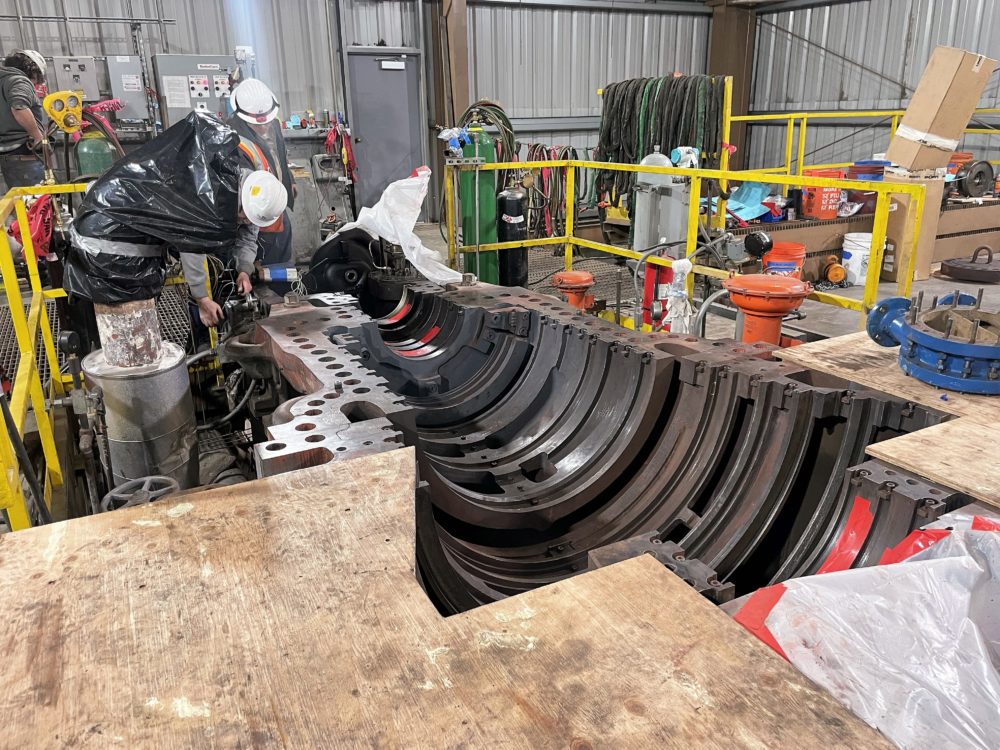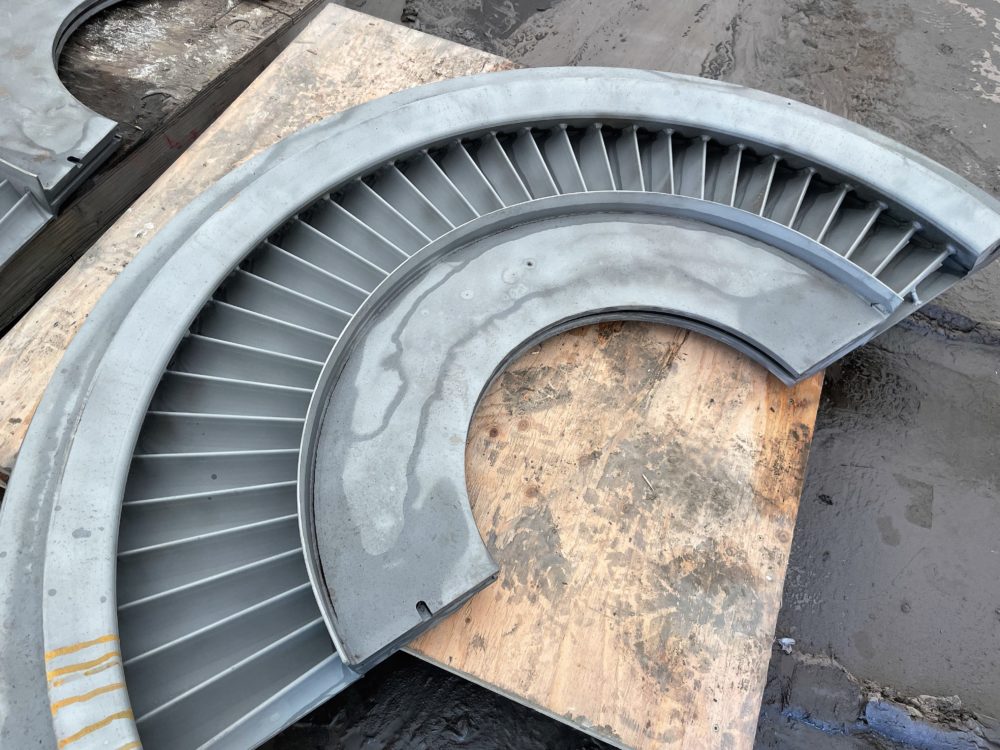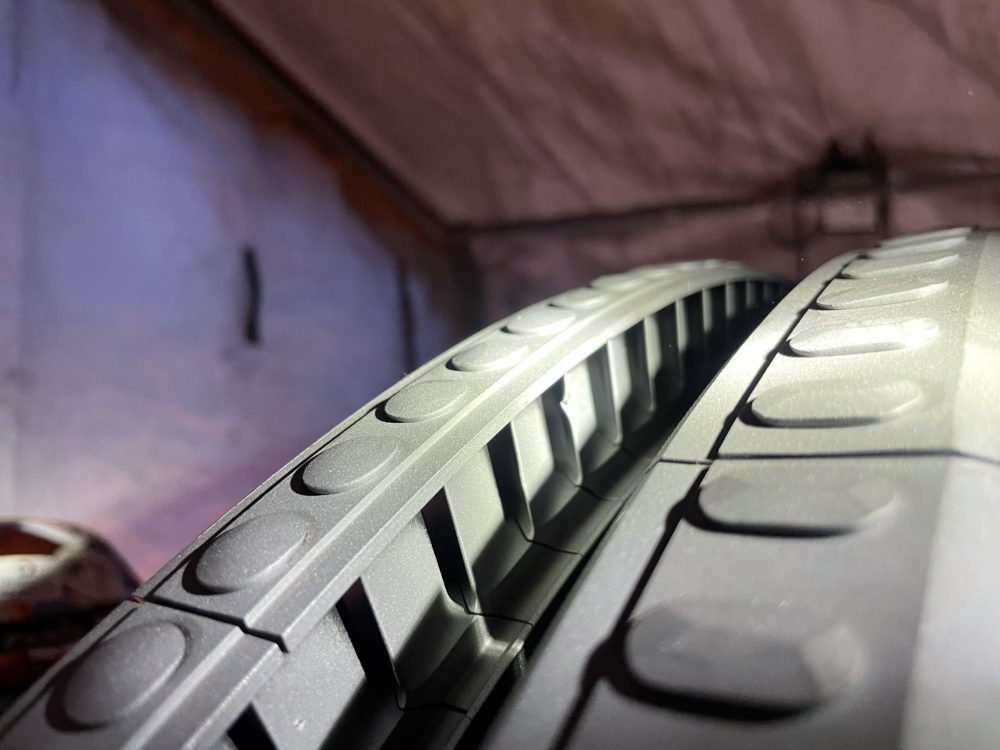It’s often said that many people don’t know what it takes to make the food that ends up in packages on their grocery store shelves, or how the clothes on their backs are woven. The same is true for the electricity that powers our lives. This week, we had a unique opportunity to look under the hood of our steam turbine and show how power is made.
Our steam turbine is a piece of equipment that runs continuously throughout the year doing an amazing amount of work to produce power for our communities. Every five years we tear the steam turbine apart to inspect, replace parts, repair wear points, and generally maintain it.

The turbine rotor itself looks like a plane engine, with a series of intricate blades set between another series of baffles. High pressure steam is delivered to the frontend of the turbine where the baffles are smaller and tighter, designed to maximize the benefit of the higher pressure.
As the steam progresses through the turbine, the steam pressure drops as energy in the steam is captured by the blades, causing the rotor to spin. Since the steam pressure drops as it continues through the turbine stages, we extract steam off the bottom of the turbine to be used for our plant processes at whichever stage provides the pressure we need, which is typically about 350psi and 65psi. The stages in the turbine get larger, and the blades longer, as the pressure drops to more efficiently capture the remaining energy from the steam until the residual steam takes a 90 degree turn and continues to the condenser. The condenser cools and collapses the residual steam back into water to be returned to the boiler and reused to generate more steam for the system.

I have always been fascinated by the fact that at some point the pressure in the turbine is actually zero, and in the condenser there is a vacuum of about -28”hg. It makes sense that as you collapse hot steam into colder water, it takes up less space and therefore creates a vacuum on the back end. The vacuum actually increases the efficiency of the turbine as it “pulls” steam through!
The point of this process seems banal in that it simply turns a shaft at 3,600 RPM, which turns the stator inside the generator field. Just as the turbine is essentially a jet engine in reverse, the generator is essentially an electric motor in reverse. Instead of exciting an electrical field to turn a shaft, we are turning a shaft inside an excited field.

The entire process is even more amazing, considering that the first steam engines were developed more than 2,000 years ago! Our turbine itself has generated power for more than 70 years, which explains the need for constant maintenance. With care and attention, this fascinating and useful piece of technology will provide electricity to our grid for decades to come.
We want to send a big thank you to Tetrad for their work maintaining the turbine. This is difficult, exact work that requires a special skill set, and they have been wonderful to work with.
Subscribe
We’ll send you a notification when a new story has been posted. It’s the easiest way to stay in the know.